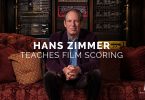Editors on Editing
Mastering Film.com is Focal Press’s taster site to get you to buy their books, and the free content they offer is well worth checking out. These excerpts from Cutting Rhythms by Karen Pearlman and Justin Chang’s Film Craft: Editing provide valuable editing nuggets.
Cutting Rhythms – Shaping the film edit
Karen Pearlman has written a book on the craft of editing called Cutting Rhythms and her thoughts on creating ‘dramatic questions’ throughout a scene are extremely insightful.
Here she is talking about the book and the excerpt follows.
http://www.youtube.com/watch?feature=player_embedded&v=tG40llVPK0M
1. Make Sure You Know What Your Dramatic Questions Are
Talk to the writer and/or director and agree on the dramatic questions. Speak them out loud, even write them down and post them on your edit suite’s wall.
A dramatic question almost always starts with the word : ‘will.’ Will someone do something, say something or getsomething.
For example: “Does Joe like Liz” is not a dramatic question. “Will Joe hook up with Liz?” is a dramatic question because an action is implied (Joe hooking up with Liz, or not) and something is at stake: the relationship. If you know what your dramatic questions are then you can choose shots and shape sequences that follow the characters as they pursue their goals, and heighten our tension – our hope and fear – about what is at stake. If you don’t know what your dramatic questions are, it is easy to get distracted, and put in unnecessary stuff.
2. Don’t Answer Dramatic Questions Without Raising New Ones
(Unless it is the end of the story.) In order to keep us wondering what happens next we need to know what action is implied and what is at stake. If Joe hooks up with Liz and they live happily ever after it had better be the end of the movie. If Joe hooks up with Liz but is then offered a job overseas we have a new question: “Will Joe choose the job or the relationship?” Action implied? Choosing. Stakes? Career and relationship.
3. If Your Script Answers Questions Without Raising New Ones, Try Using Ellipsis.
If you have a scene in a bar where the question is “Will Joe hook up with Liz” and at the end of the scene they leave the bar in each other’s arms, we know the answer. That’s fine, unless the next scene is one of them in bed together, and there is no new question. Try cutting off the end of the bar scene so we don’t know the answer. That way, seeing them in bed is a revelation, not a repetition. You may even be able to insert other scenes in between, keep us wondering about Joe and Liz while you raise a new question in another part of the story. Then, when you answer your first question, you have a second one open and in play.
Excerpted from: Cutting Rhythms, Shaping the Film Edit by Karen Pearlman ©Elsevier 2009
Film Craft: Editing – Justin Chang
The Film Craft series of books are extremely nice to handle and their relatively large size could make for an edit suite ‘coffee table’ book. If only I had a coffee table. Essentially a series of interviews with many of the world’s best editors on their approaches to editing and the inside stories from some of their best work. This excerpt comes from Walter Murch on his ‘rule of six’ on when to cut.
The rule of six
When should you cut? Few editors have put as much rigorous thought into answering that question as Murch, who has compiled a hierarchy of priorities for when and where to transition from one shot to the next. As Murch writes in his book In the Blink of an Eye: “The ideal cut (for me) is one that satisfies all the following six criteria at once:
- it is true to the emotion of the moment
- it advances the story
- it occurs at a moment that is rhythmically interesting and “right”
- it acknowledges what you might call “eye-trace”—the concern with the location and movement of the audience’s focus of interest within the frame
- it respects “planarity”—the grammar of three dimensions transposed by photography to two (the questions of stage-line, etc.)
- and it respects the three-dimensional continuity of the actual space (where people are in the room and in relation to one another).”
Murch’s simple approach to the rule of six
Murch has his own personal take on the rule of six. He weighs the importance of the criteria with the following percentage values:
- Emotion (51%)
- Story (23%)
- Rhythm (10%)
- Eye-trace (7%)
- Two-dimensional plane of screen (5%)
- Three-dimensional space of action (4%)
“The values I put after each item are slightly tongue-in-cheek,” he writes, “but not completely: Notice that the top two on the list (emotion and story) are worth far more than the bottom four (rhythm, eye-trace, planarity, spatial continuity, and when you come right down to it, under most circumstances, the top of the list—emotion—is worth more than all five of the things underneath it.”
Excerpted from FilmCraft: Editing by Justin Chang © 2012 Elsevier Inc. All Rights Reserved





